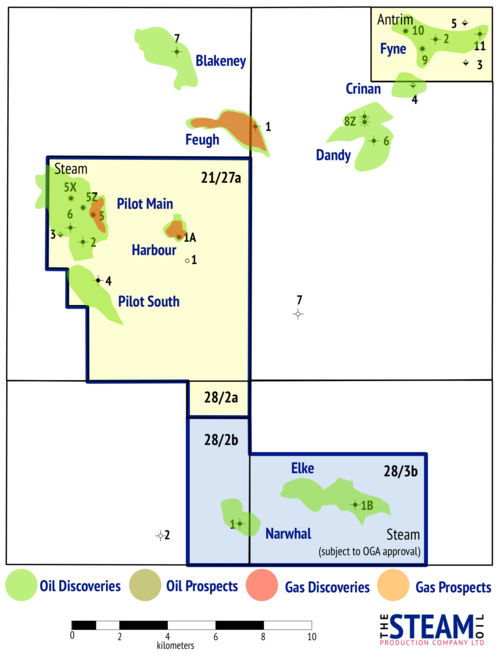
If you want to know the kind of technology it will take for the Steam Oil Production Company to develop the discoveries it has bought from EnQuest – the clue’s in the name.
The Surrey based company has developed a patented technique based on tried and tested steam injection technology.
Steam Oil Production Company (SOPC), was launched in 2014, with the intention of initiating the first offshore steamflood in Europe. The firm, based in Surbiton, Surrey, is now considering joining the alternative stock market next year.
The company has agreed a deal to take over EnQuest’s licence block east of Aberdeen will use its game changing technology to develop the heavy oil in licence 1996 – which covers the Elke and Narwhal discoveries.
SOPC was awarded the neighbouring P2244 licence – which includes the Pilot and Harbour heavy oil discoveries – in the 28th licensing round in November 2014 and wants to develop the blocks together.
All the oil in the SOPC’s assets is is heavy and quite viscous, with API gravities in the range of 12º to 17º and viscosities that range from 160 centipoise to 2,000 centipoise at reservoir conditions.
The company’s plans involve heating the heavy oil with steam so that it becomes less viscous and therefore easier to extract.
Steamflooding is effective at recovering heavy viscous oil, and recovery factors are much higher than water flooding alone can achieve.
SOPC, which was founded by chairman and chief executive Steve Brown, applied for a patent for its technique from the UK Intellectual Property Office (IPO) in October this year.
“Steamflood is the prime way to produce heavy oil,” said Brown.
“We think that our project can be a ‘pilot’ steam flood for the North Sea. We think it can prove that you can take steam offshore.
“It could open up the potential to recover an additional two billion barrels of oil in the UKCS.”
Steam injection has already been used in onshore projects in California, Canada, Indonesia and Venezuela.
Perenco is injecting steam into the Emeraude field off the coast of Congo, which lies in a depth of 55 metres, while the method is also being used at Bohai Bay in China.
Extra heavy oils – such as the tar sands in Alberta, Canada – can also be recovered using a technique known as steam-assisted gravity drainage.
“The conventional wisdom is that you can’t steam flood offshore. I’ve lost count of the number of times people have looked at me as if I’m off my trolley. Most North Sea fields are too deep to steam flood, but not all.”
SOPC will look to drill 1,500metre horizontal wells at 100metre spacing which reduces the well count to an effective density of five acres, which enables to take steam flood offshore.
SOPC said the Pilot and Harbour discoveries together contain 272 million barrels of heavy oil in place, while the Elke and Narwhal discoveries add a further 225 million barrels to its Western Platform Steam Flood project.
The company thinks it could recover more than 250 million barrels from the four discoveries and that the total could rise to as much as 500 million barrels if other reserves in the area were extracted.
Steam flooding is amongst the most efficient means possible for recovering oil – recovery factors for successful steam floods range from 50% to 80%.
Brown said: “If we began working with a large company as operator then it could take around five years until we produce our first oil. Our breakeven price is somewhere under $50 a barrel.”
“We’re looking for partners to help us take this project forward. We believe that whichever operator works with us will be at the forefront of deep steam offshore and they’ll have a real advantage here in the UKCS and internationally.”
The flagship Pilot field was discovered by French oil company Fina in 1989, with the block then passing to Total, Venture Production and finally EnQuest, which relinquished the licence in 2013.
Narwhal was drilled by Arco in 1993 and Elke by Murphy in 2000.